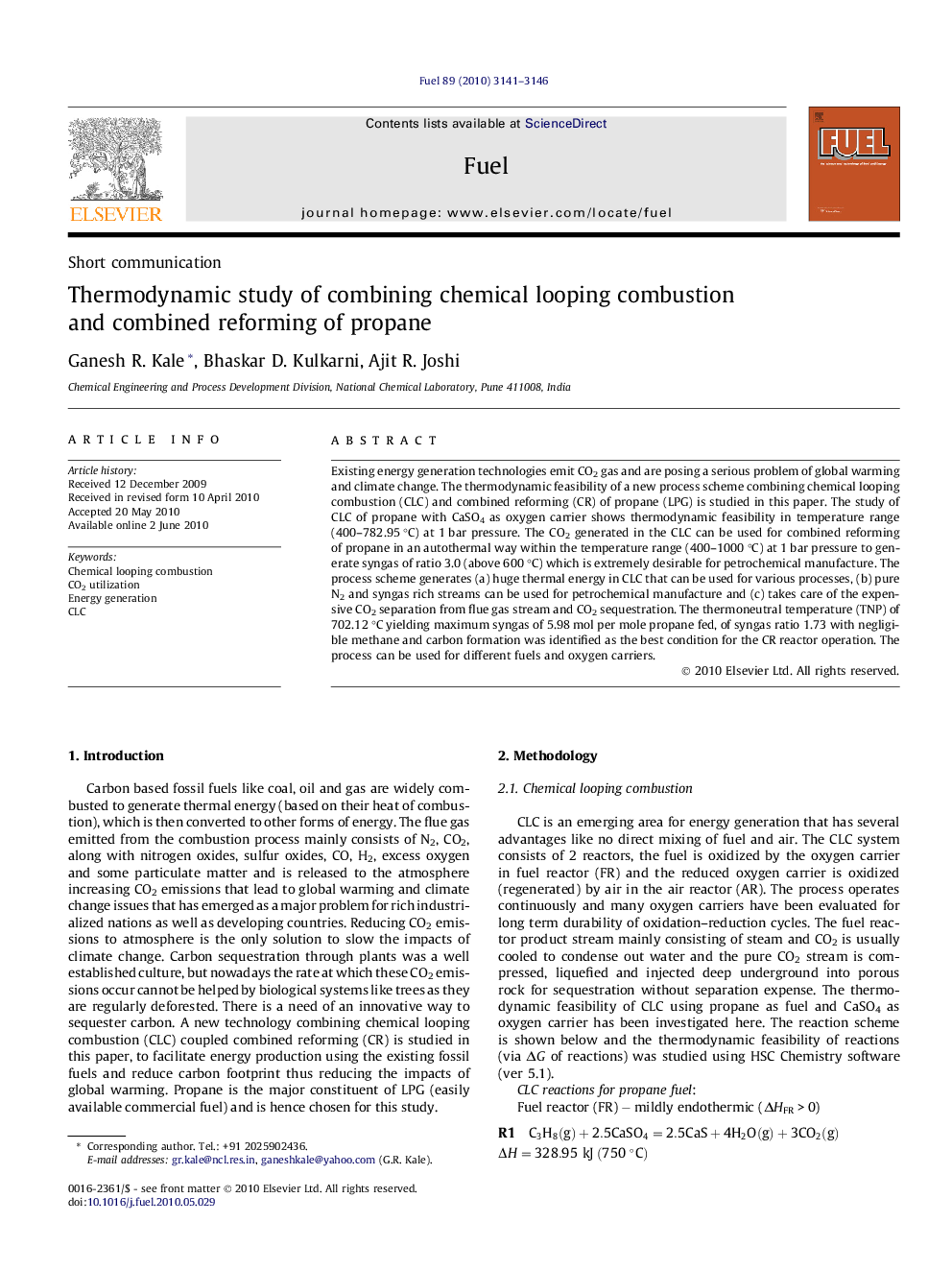| Article ID | Journal | Published Year | Pages | File Type |
|---|---|---|---|---|
| 206583 | Fuel | 2010 | 6 Pages |
Existing energy generation technologies emit CO2 gas and are posing a serious problem of global warming and climate change. The thermodynamic feasibility of a new process scheme combining chemical looping combustion (CLC) and combined reforming (CR) of propane (LPG) is studied in this paper. The study of CLC of propane with CaSO4 as oxygen carrier shows thermodynamic feasibility in temperature range (400–782.95 °C) at 1 bar pressure. The CO2 generated in the CLC can be used for combined reforming of propane in an autothermal way within the temperature range (400–1000 °C) at 1 bar pressure to generate syngas of ratio 3.0 (above 600 °C) which is extremely desirable for petrochemical manufacture. The process scheme generates (a) huge thermal energy in CLC that can be used for various processes, (b) pure N2 and syngas rich streams can be used for petrochemical manufacture and (c) takes care of the expensive CO2 separation from flue gas stream and CO2 sequestration. The thermoneutral temperature (TNP) of 702.12 °C yielding maximum syngas of 5.98 mol per mole propane fed, of syngas ratio 1.73 with negligible methane and carbon formation was identified as the best condition for the CR reactor operation. The process can be used for different fuels and oxygen carriers.
